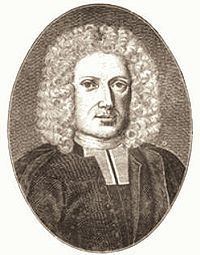Nationality German Role Botanist Fields Botany, Physician | Name Rudolf Camerarius Doctoral students Johann Andreas Planer | |
 | ||
Died September 11, 1721, Tubingen, Germany Parents Elias Rudolph Camerarius, Sr. Doctoral advisor Elias Rudolph Camerarius, Sr., Georg Balthasar Metzger | ||
Rudolf Jakob Camerarius or Camerer (February 12, 1665 – September 11, 1721) was a German botanist and physician.
Life
Camerarius was born at Tubingen, and became professor of medicine and director of the botanical gardens at Tubingen in 1687. He is chiefly known for his investigations on the reproductive organs of plants (De sexu plantarum epistola (1694)).
While other botanists, such as John Ray and Nehemiah Grew, had observed that plants seemed to have sex in some form, and guessed that pollen was the male fertilizing agent, it was Camerarius who did experimental work. In studying the mulberry, he determined that female plants not near to male (staminate) plants produced fruit but with no seeds. Mercurialis and spinach plants fared likewise. With the castor oil plant (Ricinus) and with maize he cut off the staminate flowers (the "tassels" of maize), and likewise observed that no seeds formed. His results were reported in the form of a letter (the epistola), and attracted immediate attention, subsequent workers extending his results from the monoecious plants he had studied to dioecious ones as well.
